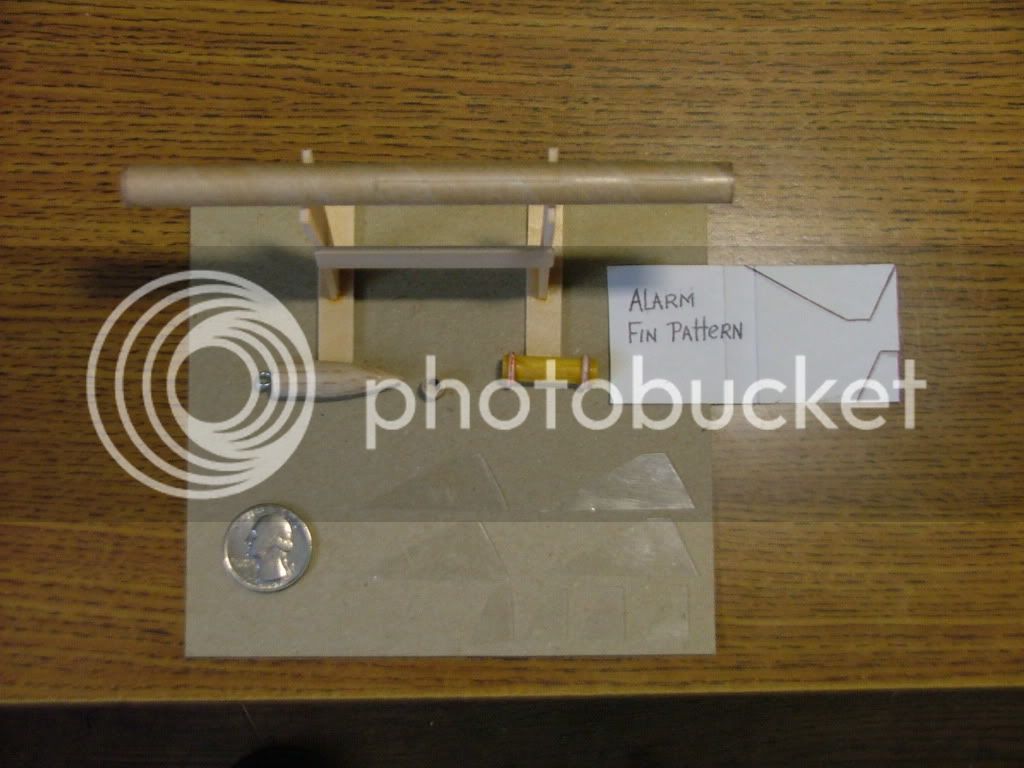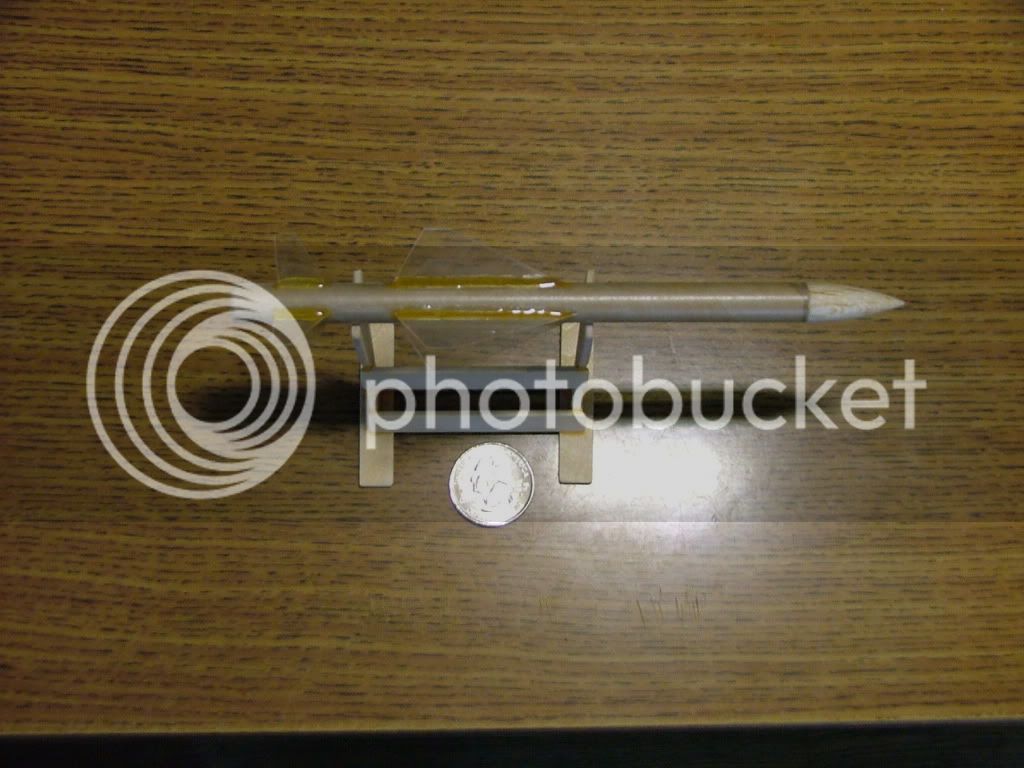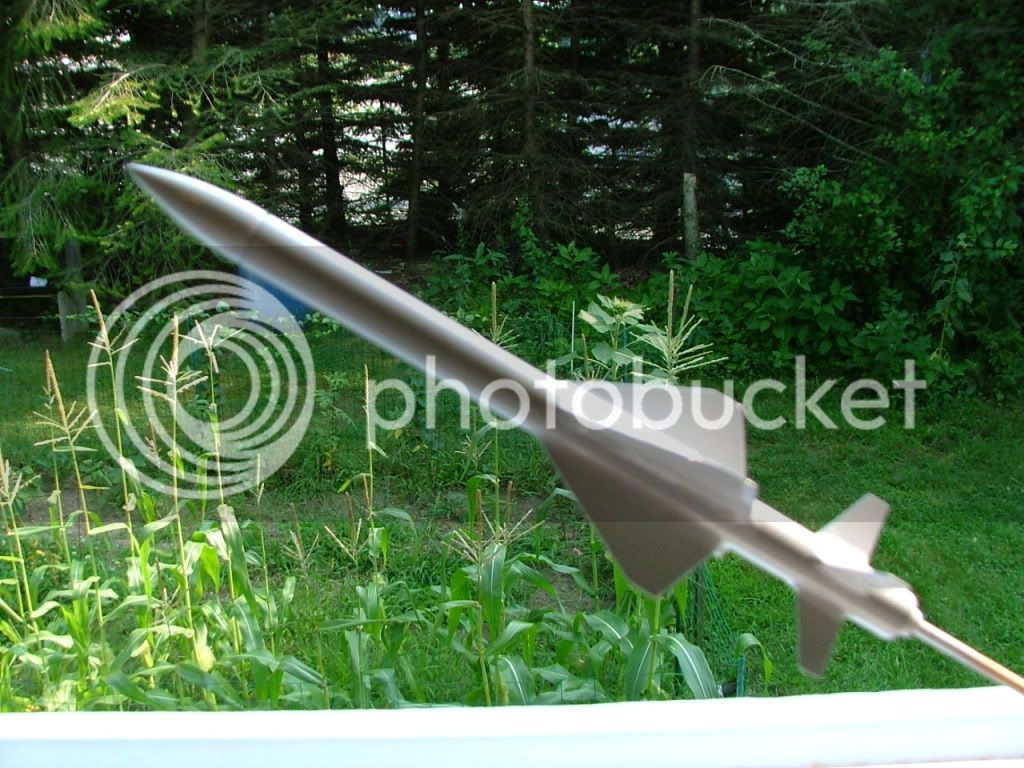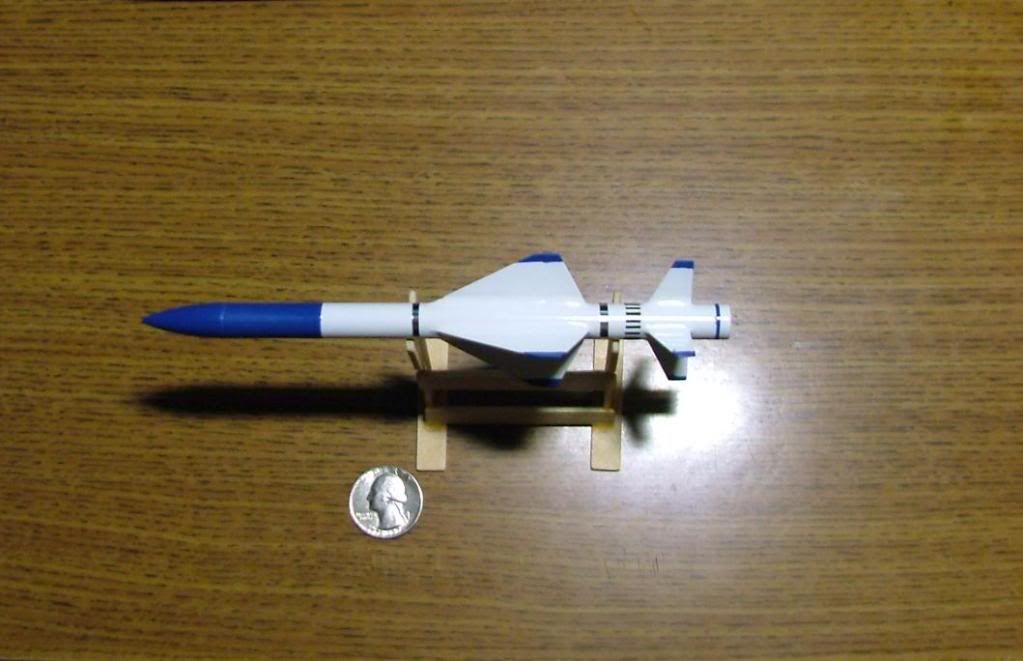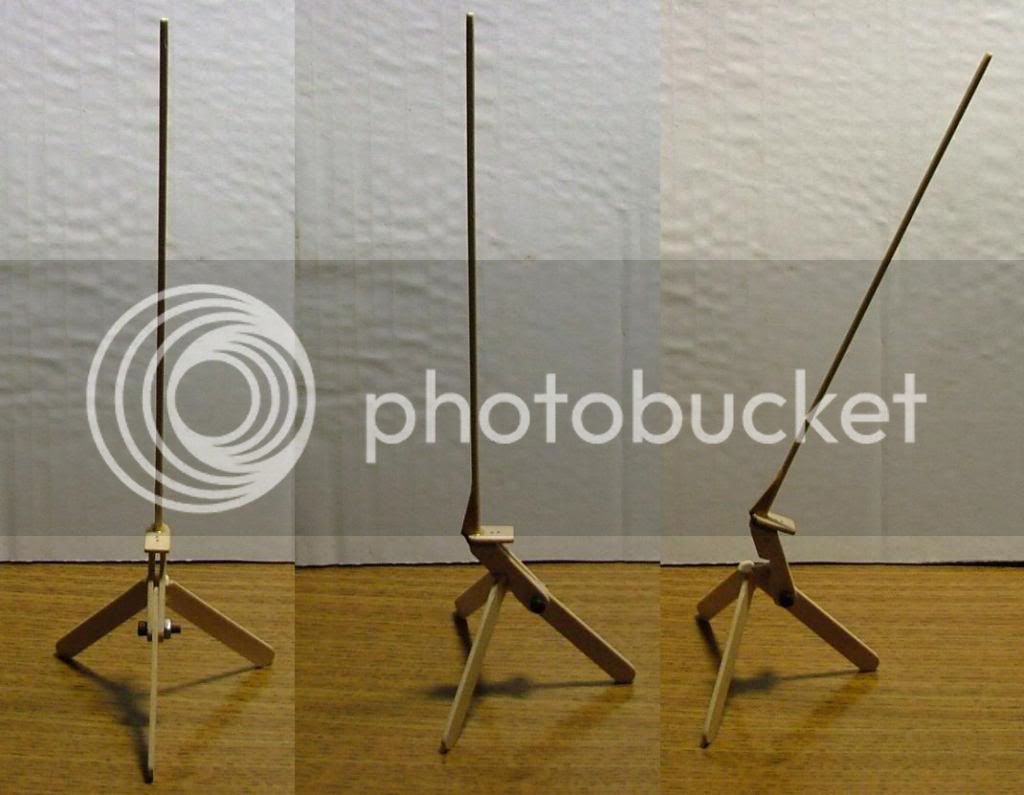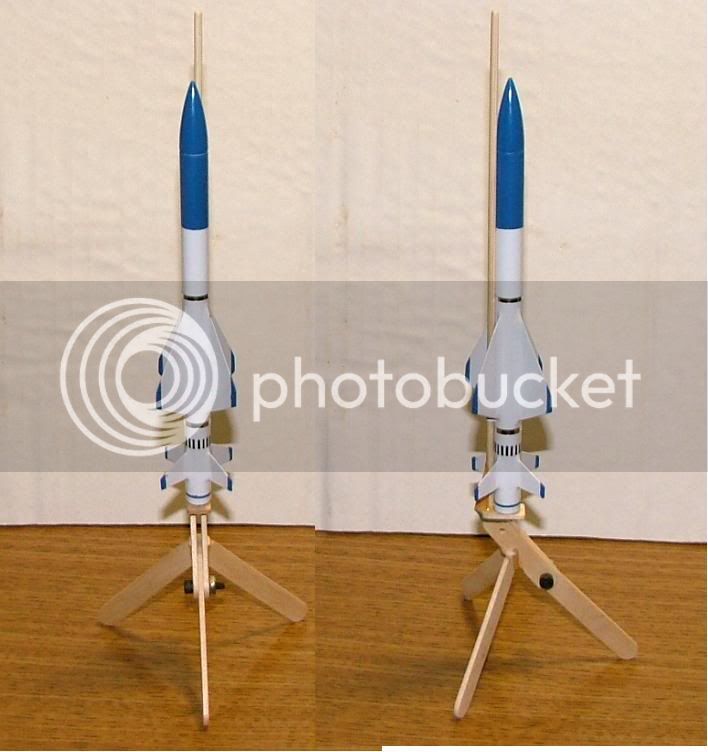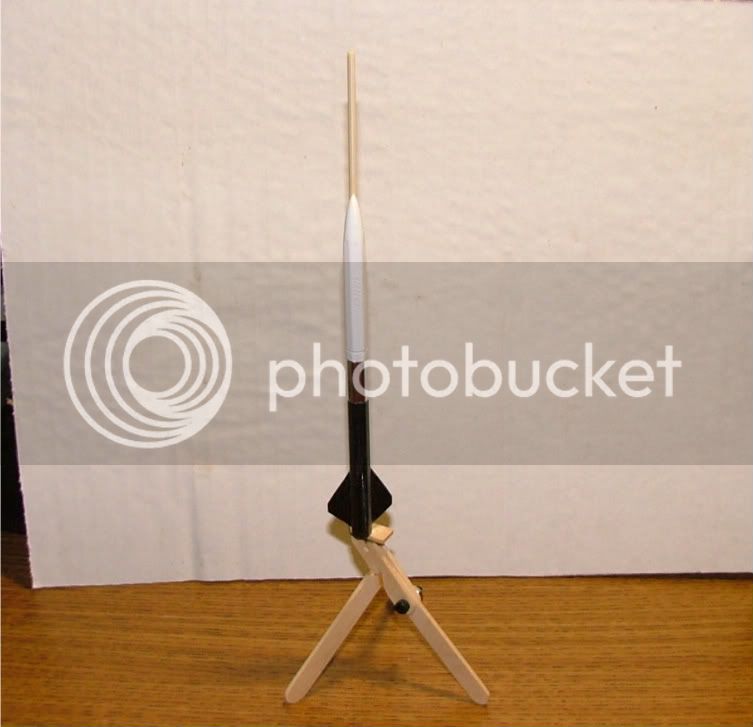Unless your model is a lot larger than I think. Looks like T3 (.375") or T4 (.448") dia body to me

all you'll need is about 9" -12" of plain old plumbers white teflon tape as a streamer that also doubles as your wadding. I'm using double thick military grade colored Teflon tapes for just about all my Micro models, and new build standard size models. If you used Kevlar as your shockline simply tie the tape to the line. Talc baby powder the heck out of both sides before you fold/roll it the first time. it's good do go. after a couple flights you'll need to re-powder the tape but it generally outlives the model.
Very Cute display launcher, but I think you'll find you need a little more base weight for stability out in the field. Generally most of us use .049" music wire of one type or another for the launch rods in 9 to 12" lengths. 1/8" or smaller coffee stir sticks, or the hollow small dia dollar store Q-tip stems make excellent Launch lugs for micros.
You mentioned you got most of our micro supplies from Quest. Might I suggest taking a look at Fliskit.com He has a complete line of just about everything needed for building scratch micros. very single piece I've ever purchased from them has been highest quailty, first rate stuff. and I make just about all my own micro parts. I have to say the balsa cones, plugs and transitions supplied by Fliskits are as good as any of the Basswood part I turn for myself.
You will need to add a bit of clay or something metal to the blast deflecting area as you'll be a little surprised by the energy of these little motors. I melted thru an .040" 5005 alum plate on a first launch once. I've seen switched to 22ga stainless deflectors or covered the area in Nomex.
Launcher can be as easy as a couple pieces of music wire stick in a board and two cloths pins to very detailed micro Rack systems.
I've switched my everyday type launching to a light weight digital camera tripod with a homemake aluminum/acrylic launcher base that can accept a number of different launcher arrangements, towers, pistons, rods, and accessories.
Not sure if your aware of the MicroMaxRockets Yahoo group. If you join us our files section full of info and tips on all kinds of different launcher/controller materials, igniter material methods etc. Lists of where to get needed materials and parts or how to make your own.
Tons of pics and plans for a couple hundred different scratch micro models for download.
Hope you'll check us out.

